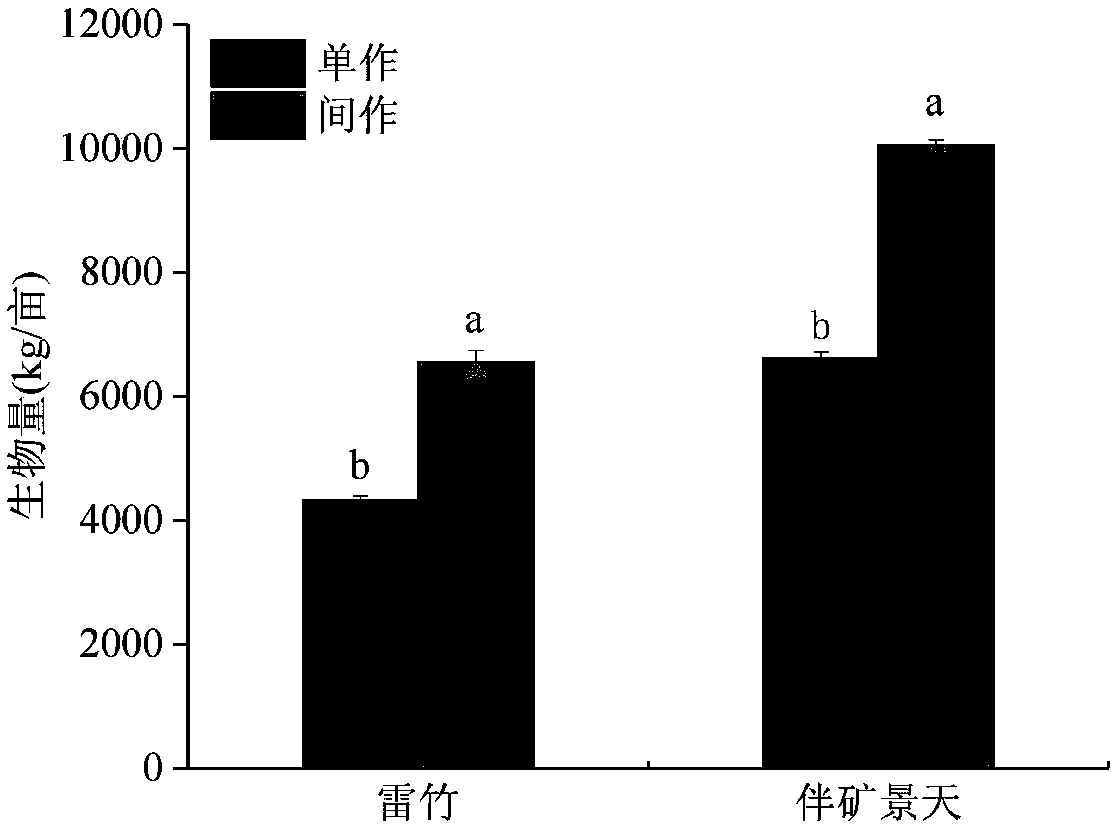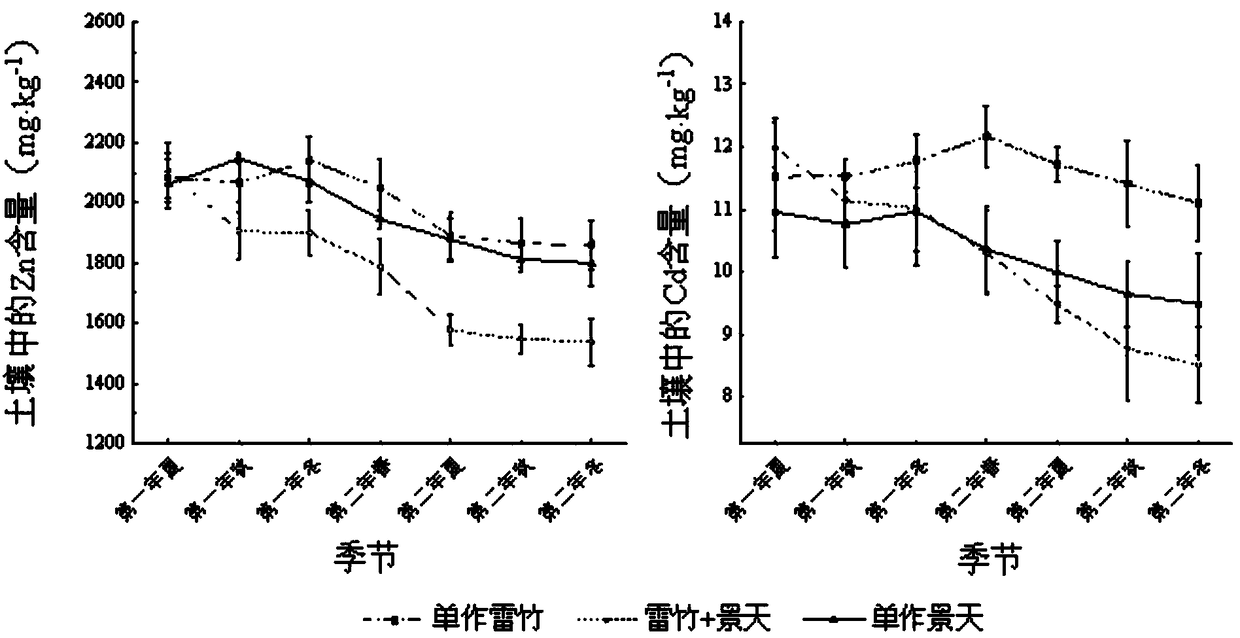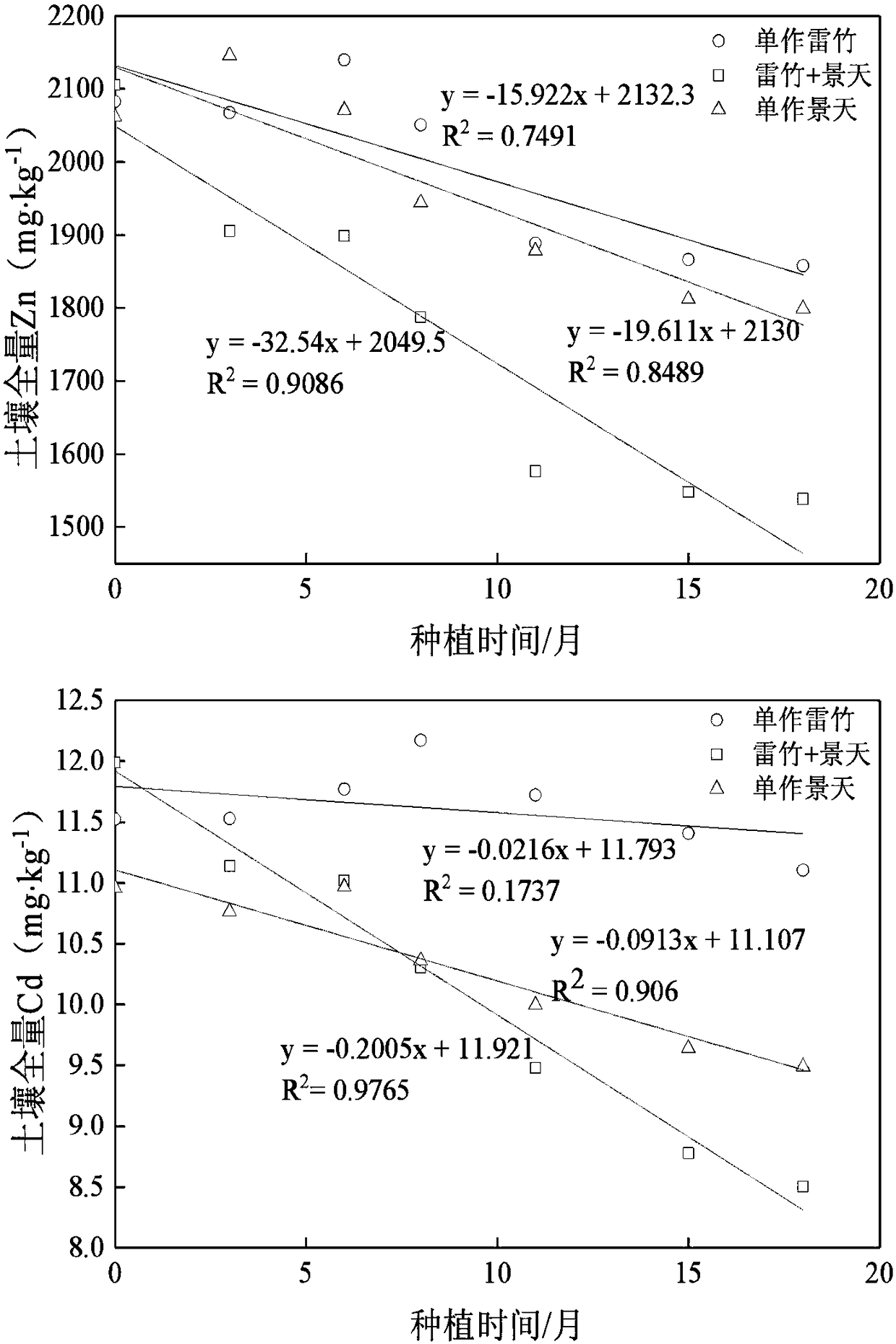Plant restoration method for zinc and cadmium composite polluted soil
A composite pollution and phytoremediation technology, applied in the field of phytoremediation of zinc-cadmium composite polluted soil, can solve the problems of only suitable for the restoration of lightly polluted farmland soil, long restoration period, and inability to guarantee the economic interests of farmers, etc. The effect of crop yield
- Summary
- Abstract
- Description
- Claims
- Application Information
AI Technical Summary
Problems solved by technology
Method used
Image
Examples
Embodiment 1
[0026] A phytoremediation method for zinc-cadmium composite polluted soil comprises selecting the zinc-cadmium composite contaminated soil to be treated as a treatment area, and interplanting sedum sedum and thunder bamboo in the treatment area.
[0027] There is a 5m isolation zone around the treatment area, and the area of each treatment area is 20m 2 (10m×2m). The planting density of Sedum sedum is 15cm×15cm, 66 plants in each column, 13 plants in each row; the planting density of Thunder bamboo is 50cm×50cm, 20 plants in each column, 4 plants in each row. Phyllostachys praecox adopts the planting method of transplanting; Sedum sedum with cuttings adopts the planting method of cuttings, selects Sedum sedum with uniform size, and takes the 7-8cm aboveground part to cut directly in the control area. Phyllostachys praecox was planted on April 22, 2014, and sedum sedum was planted on April 28, 2014. The mass percentage concentration of nitrogen, phosphorus and potassium was ...
Embodiment 2
[0036] There is a 5m isolation zone around the treatment area, and the area of each treatment area is 20m 2 (10m×2m). The planting density of Sedum sedatus is: row spacing of 20cm×20cm, 50 plants in each column, 10 plants in each row; Phyllostachys praecox planting density is: row spacing of plants is 75cm×75cm, 13 plants in each row, 2 plants in each row. Phyllostachys praecox adopts the planting method of transplanting; Sedum sedum with cuttings adopts the planting method of cuttings, selects Sedum sedum with uniform size, and takes the 7-8cm aboveground part to cut directly in the control area. Phyllostachys praecox was planted on April 22, 2014, and sedum sedum was planted on April 28, 2014. The mass percentage concentration of nitrogen, phosphorus and potassium was applied to each treatment area with a concentration of 15%: 15%: 15% of nitrogen and phosphorus Potassium compound fertilizer 1.5kg, regular watering and weeding. Sedum sedum with mines is harvested every 4...
Embodiment 3
[0038] There is a 5m isolation zone around the treatment area, and the area of each treatment area is 20m 2 (10m×2m). The planting density of Sedum sedum is 18cm×15cm, 55 plants in each column, 13 plants in each row; Phyllostachys praecox planting density is: 100cm×100cm, 10 plants in each column, 2 plants in each row. Phyllostachys praecox adopts the planting method of transplanting; Sedum sedum with cuttings adopts the planting method of cuttings, selects Sedum sedum with uniform size, and takes the 7-8cm aboveground part to cut directly in the control area. Phyllostachys praecox was planted on April 22, 2014, and sedum sedum was planted on April 28, 2014. The mass percentage concentration of nitrogen, phosphorus and potassium was applied to each treatment area with a concentration of 15%: 15%: 15% of nitrogen and phosphorus Potassium compound fertilizer 1.5kg, regular watering and weeding. Sedum sedum with mines is harvested every 5 months, and fertilized again, and new...
PUM
 Login to View More
Login to View More Abstract
Description
Claims
Application Information
 Login to View More
Login to View More - R&D
- Intellectual Property
- Life Sciences
- Materials
- Tech Scout
- Unparalleled Data Quality
- Higher Quality Content
- 60% Fewer Hallucinations
Browse by: Latest US Patents, China's latest patents, Technical Efficacy Thesaurus, Application Domain, Technology Topic, Popular Technical Reports.
© 2025 PatSnap. All rights reserved.Legal|Privacy policy|Modern Slavery Act Transparency Statement|Sitemap|About US| Contact US: help@patsnap.com



